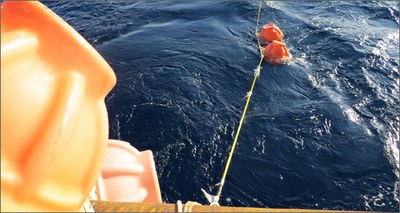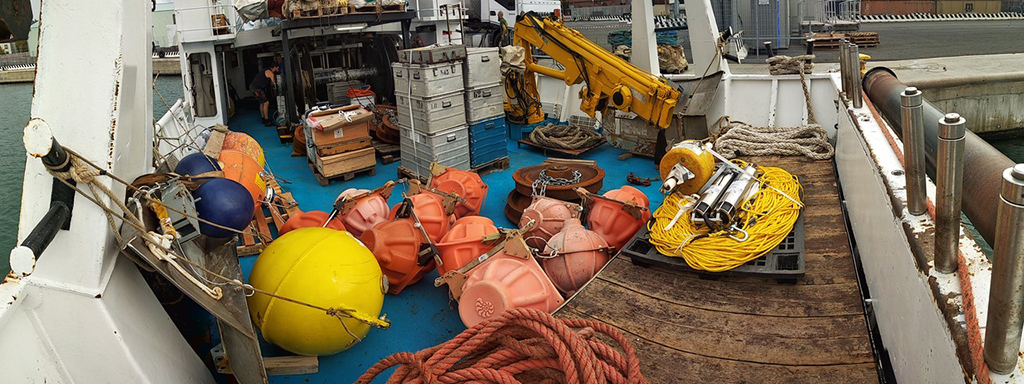Environment: Deep underwater observatory off the Liguria coastline
16/1/2020
 An underwater laboratory was activated in the eastern Ligurian Sea, at a depth of 600 metres, located 6.5 nautical miles (about 12 km) off the coast of the Cinque Terre district. The laboratory is to study the effects of climate change, mitigate natural hazards and protect marine ecosystems from water acidification and trawling. This is the first depth laboratory created in Liguria, thanks to the “Levante Canyon Mooring” project, financed by the Regional Authority of Liguria[1].
An underwater laboratory was activated in the eastern Ligurian Sea, at a depth of 600 metres, located 6.5 nautical miles (about 12 km) off the coast of the Cinque Terre district. The laboratory is to study the effects of climate change, mitigate natural hazards and protect marine ecosystems from water acidification and trawling. This is the first depth laboratory created in Liguria, thanks to the “Levante Canyon Mooring” project, financed by the Regional Authority of Liguria[1].
The lab was ‘launched’ by the Distretto Ligure delle Tecnologie Marine (Ligurian marine technologies district) with back-up provided by the oceanographic ship, Nave Oceanografica Dallaporta, and with the collaboration of ENEA, CNR, INGV and the Istituto Idrografico della Marina Militare (the hydrographic institute of the Italian navy (IIM)).
Installed at the “Pelagos” cetacean sanctuary and an underwater canyon, this special laboratory is a very special observation point, hitherto absent in the waters of eastern Ligurian Sea. It was set up for the purposes of geophysical and oceanographic monitoring of the seabed and water column and for determination of parameters such as salinity, temperature, turbidity and speeds of the current.
The strong bottom currents and the consequent accumulation of sediments and organic substances create an environment that favours the development of valuable ecosystems, as confirmed also by ENEA and IIM studies[2] pointing to the presence at a depth of about 570 metres of live white corals (of considerable scientific and environmental interest, also because threatened by trawling).

In collaboration with the other bodies involved, and in addition to support for the logistical choice of the site and detailed planning of the infrastructure layout, ENEA has provided the project with two probes for temperature and salinity measurements, and one sediment trap.
The researchers of the Santa Teresa research centre (Centro Ricerche ENEA di Santa Teresa) will also take part in the subsequent phases of data acquisition and processing, as well as maintenance and management of the observatory.

For further information:
Federica Pannacciulli, ENEA - Centro Ricerche di Santa Teresa - Head of “laboratorio Biodiversità e servizi ecosistemici” (biodiversity and ecosystem services laboratory), federica.pannacciulli@enea.it
Tiziana Ciuffardi, ENEA - Laboratorio Biodiversità e servizi ecosistemici, tiziana.ciuffardi@enea.it
